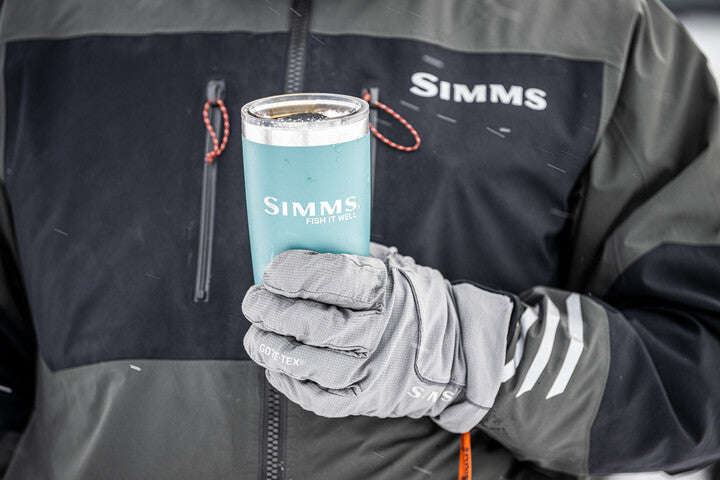Hopper season is in full swing ... Call today to book your Montana Adventure!
Hopper season is in full swing ... Call today to book your Montana Adventure!
Hopper season is in full swing ... Call today to book your Montana Adventure!
Hopper season is in full swing ... Call today to book your Montana Adventure!

Not everyone out there appreciates the numb fingers, iced-up guides, and biting cold that comes with fly fishing in the winter. But if you're up to the challenge, the rewards can be worth it. Here are just a few tips you should keep in mind if you're obsessed enough to fly fish this winter.
Cotton is your enemy when the temperatures drop and you're standing in nearly frozen water. Covering up with thermal baselayers will prevent you from absolutely freezing. Regulating your core temperature is crucial in the cold, and keeping your torso and legs covered and insulated is the best way to enjoy your day.
The River's Edge Pick: Simms Heavyweight Baselayer Bottom
This is an old trick of the trade. Some people use lubricants such as WD40, but if we're actually going to be stewards of the waters we use, try something a bit more environmentally friendly. A good stick of Bert's Bees will get the job done more often than not. Simply apply it to your guides as if you would on your dry, chapped lips and you should be good to go. Definitely pay attention, though, as you may need to re-apply a time or two, depending on how long you're out there.
One of the first decisions to make is whether you're going to float or wade. If you don't have access to a boat, the choice is simple. In that case, it's a great idea not to go too far from your vehicle. That way, if you do need a nice blast of heat, you can crank up the car and try to defrost.
If you do plan on floating (which can be excellent, depending on conditions), think about the time you'll be on the water. Maybe skip the 12 mile floats and focus your energy on a smaller section of water that you can push through if you become too cold. Limiting your time outside can help you avoid the dangers of hypothermia.

It's inevitable that your fingers will feel the brunt of the cold. After all, you're touching a wet line with every cast and, hopefully, releasing a few fish. There are as many opinions on gloves as there are anglers, but here are a few ideas we've used in the past.
With cold weather comes ice, especially around rivers and lakes. Watch out for anchor ice, which is ice that forms on rocks underneath the surface of the water. This can be extremely dangerous and turn a fun day of fishing into the wrong type of adventure. Just beware as you approach the edges of the water. Secondly, if you're wearing felt boots, the snow and ice can build up on the sole and make you feel like you're about six inches taller—which is cool, but also treacherous. As you wade, remember to knock off the accumulated snow and ice to prevent a twisted ankle or an impromptu polar plunge.
Winter fly fishing can be great, filled with BWO hatches and fish still eager to eat. Just be mindful of where you wade, be sure to wear a bunch of layers, and experiment with different types of gloves. Oh, and don't forget the lip balm.

April 29, 2024 1 min read